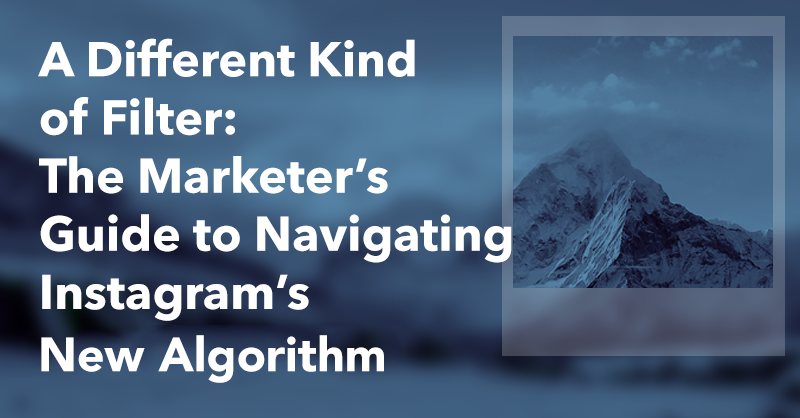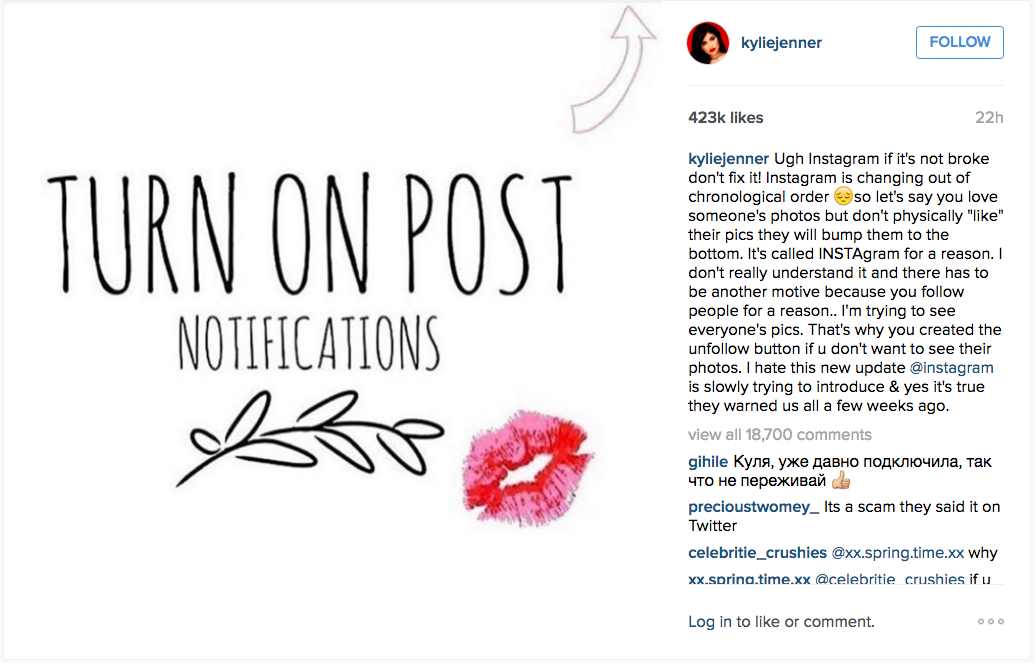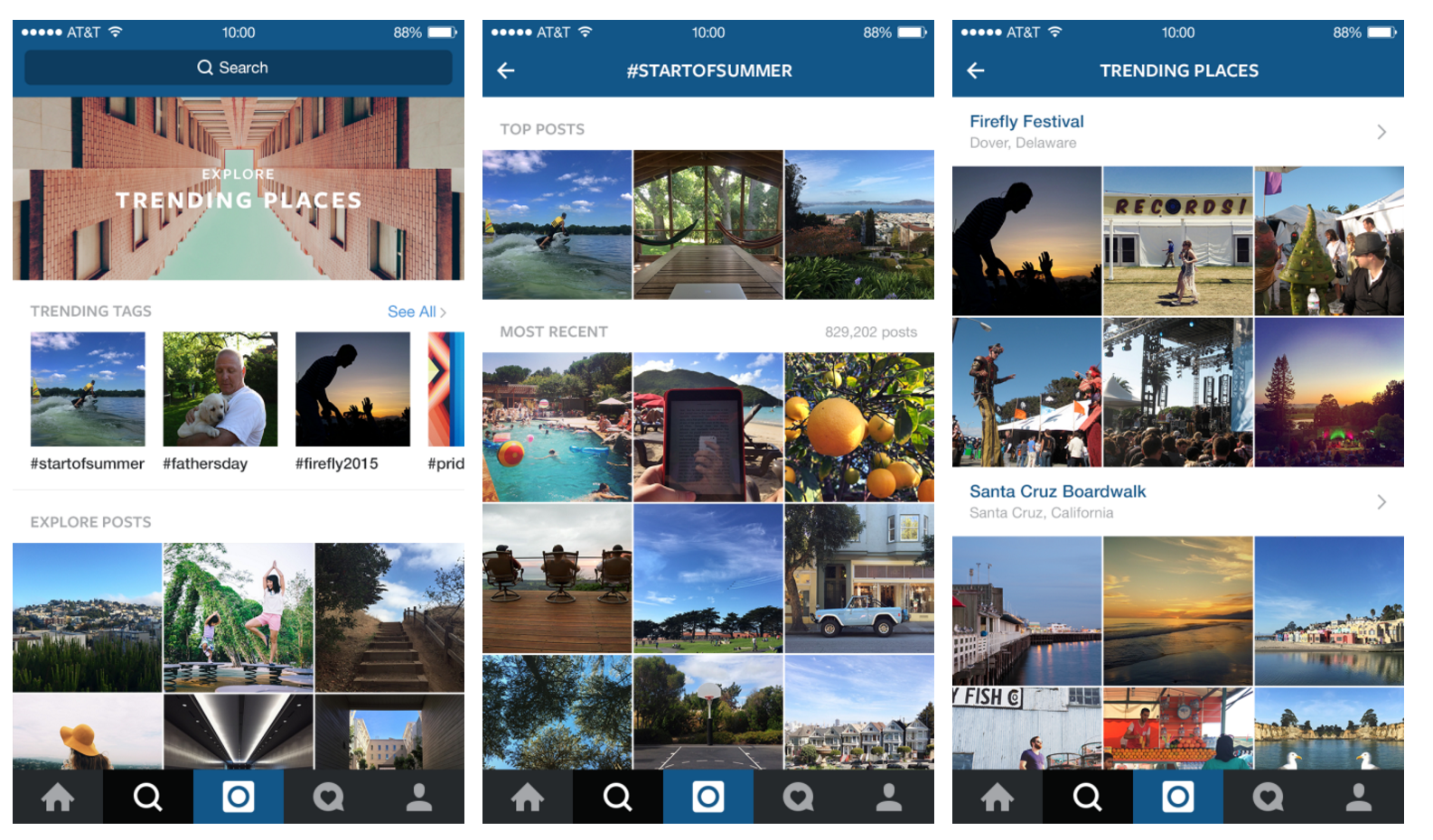
When Facebook bought Instagram in 2012 for the (then shocking) price tag of one billion dollars, the digital world wondered aloud what Facebook’s endgame was.
Some lauded the move, others were cautiously hopeful, and quite a few predicted imminent doom for the house that Zuckerberg built.
One thing was certain though – nobody was certain about what exactly Facebook’s long-term plan was with the promising, yet immature social photo-sharing platform.
Nearly four years later, this plan has started to come sharply into focus. After carefully fostering incredible growth on the platform, Facebook has been gingerly incorporating its own considerable advertising prowess into Instagram’s DNA.
First, Instagram allowed brands to hop the curve by offering robust, in-feed ads (much like Facebook did with Newsfeed’s sponsored posts). This change surprised few, caused generally little fuss and, for the most part, these ads have gone over quite well with consumers and advertisers alike.
However, the newest change is causing quite a stir.
Instead of the straightforward, reverse-chronological feed Instagram’s users have gotten used to, there has been a recent move (announced via a very humble blog post, March 15th) to add more sophisticated algorithmic filtration that considers much more than the time you chose to publish your posts.
This post will explore what to be excited about, what to be concerned with and how to navigate the good and the bad of Instagram’s newest filter.
The Good
Change is often scary, but also often exciting.
While the real extent of Instagram’s changes are yet to be revealed, I think it is worth noting that there will be plenty of positives to expect from the implementation of some kind of filtration.
The following are just a few things to look forward to.
Great content will be rewarded
Instagram’s current filter is blind to everything but chronology. While this is good if you relied on just pumping out as much content as possible, the plain truth is that even the best Instagram posts could easily be drowned out by your follower’s friend posting a hundred pictures of brunch.
Filtration now rewards posts that get great engagement and pages that consistently deliver quality content. Brands have more resources and therefore stand to gain, so long as they focus on quality over quantity.
Instagram has not yet made the mechanics of the changes clear, but if Facebook’s past approach to algorithmic filtration is any indication, expect a big emphasis on overall engagement rates and consistent performance.
For marketers, this means holding back on tendencies towards a “spray and pray” method and instead consolidating your efforts into better, more polished posts.
Engagement is where the rewards are anyway
Just being on a platform for the sake of being there is a mistake. To build a brand with purpose using content marketing requires making your social presence a means to a greater end.
The only reason a brand would ever really want to be on social media is to further expand and engage their customer base.
Since generating engagement and exposure is a major focus of social marketing anyways, the fact that Instagram is now connecting the two will only serve to reinforce this higher level truth, and punish brands that weren’t doing a good job connecting with their customers to begin with.
Marketers have been confident about Instagram for a while now, but the numbers being put out by the platform were beginning to tell a different story as the network continues to grow in popularity amongst brands and consumers alike.
Kevin Systrom revealed in the blog post announcing the change that “on average people miss about 70% of their feeds,” and the increasing deluge of content may have contributed to a reported “40% drop in user engagement in the past year.”
An algorithm change may upset the status quo and change around the existing hierarchy, but if engagement declines can be reversed, it spells a better future for the businesses using the platform as a whole.
The Search/Explore tab can shed light on the changes
As I mentioned above, one reason people are freaking out about this change, is because they are not sure exactly what it will mean.
This lack of certainty (and subsequent filling in the blanks with doomsday scenarios) has led many Instagram influencers to beg their followers to #TURNMEON by enabling post notifications.

However, many Instagram accounts currently fretting about what the changes might mean should look no further than within the apps lesser-used tabs for pretty big clues as to what the revamped core product might look like.
In a company blog post last June Instagram rolled out the revamped Search and Explore feature. Looking at the explanation for the product expansion it is easy to see how the incentives for those changes align with the current algorithm updates being proposed.

The Search and Explore features were updated to better highlight content related to a person’s specific activities and interests by showcasing images and accounts similar to who a person is currently following and images they’ve engaged with hearts and comments on the platform before.
It’s safe to say that the customization and predictive functionality used on Search and Explore may be used to inform how the Instagram algorithm in the feed will showcase content in the near future.
The Bad
While there is plenty of opportunity presented by the changes on Instagram, it would be naive of marketer’s to believe that they do not present obstacles as well.
Especially for brands who have carved out a sizable portion of their business via an Instagram presence and have settled into a formulaic, data-driven approach tailor-made to produce results; a sudden change of the rules can seriously disrupt their current course.
Here are the potential pitfalls to be wary of as these changes come to bare.
Competition on Instagram is ferocious
Because Instagram has grown so rapidly, holds so much cultural cache and values incredible visuals, there is some truly amazing content out there competing for your customer’s attention.
Only the largest brands can have a dedicated Instagram creative team, and unfortunately the new algorithm will tip the scales even further in their favor.
The one edge smaller brands have, and one they now must embrace even more fervently, is to remain incredibly relevant and to interact intimately with customers.
Big brands might produce incredibly polished content, but to make that content worth it they must maintain broad appeal.
You’ll likely not compete on those terms, but you can know your niche and create and engage specifically with them. Instagram’s algorithm change will make the rewards of this strategy much more prominent than before and likely necessitate that smaller brands begin to think this way.
For the most part, this aligns with advice I’ve been giving long before any news of algorithm updates started floating around.
Brands might have to pay to play
Facebook is still a fantastic place for brands, but marketers have had to come to terms with the fact that they must use sponsored post to supplement their organic reach if they want to succeed on the platform.
While Instagram was underneath the Facebook umbrella, marketers on Instagram have been shielded from this pay-to-play imperative.
Currently, there is no formal divide on Instagram between brand and personal pages, but there’s no way of knowing whether or not Instagram’s algorithm might create an informal distinction between the two.
While many people that this update spells “The death of Instagram for brands,” there has been no talk yet confirming or denying this fear.
This is not to say such changes will not spring up down the road, and I would be sugar-coating my forecast if I did not tell you that brands should start preparing for the future possibility of paying for the Instagram reach they currently enjoy for free.
With that being said, the one way to stay ahead of these changes is to simply maximize engagement from the beginning.
Don’t wait to get walled off and then complain. Create engaging, compelling content and you will likely be shielded from the worst of the algorithmic oblivion the pessimists are prophesying.
The Key Takeaways
Time will tell what Instagram’s changes hold for the platform and for marketers. But for now, they’ve made it clear that what they are after is engaging, relevant and quality posts. Not to mention, Instagram is looking to further monetize from this update without alienating its audience.
Don’t worry about the minutiae of the changes, that is a recipe for frustration and wasted effort.
Instead, look at the bigger picture and continue to create impactful content that your customers want to see, which is what Instagram is after as well.
I might be looking at this whole scenario through rose-colored glasses, but I could imagine worse filters to see these changes through.


